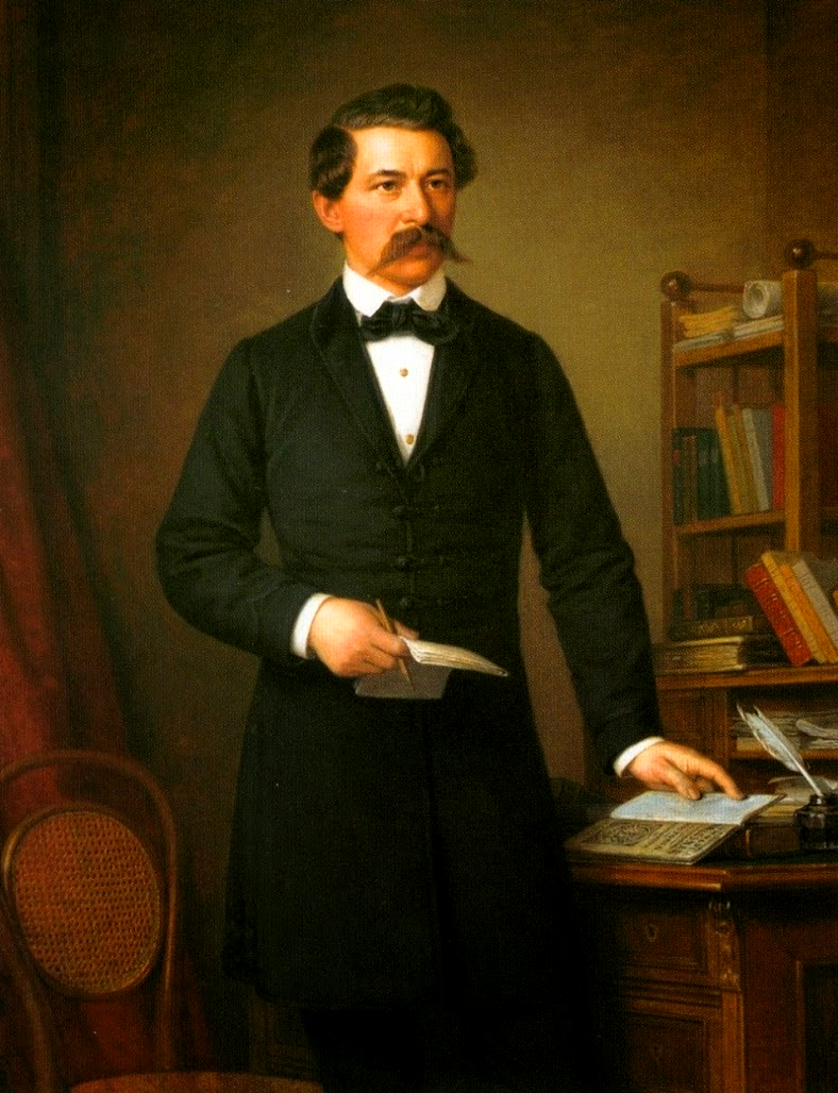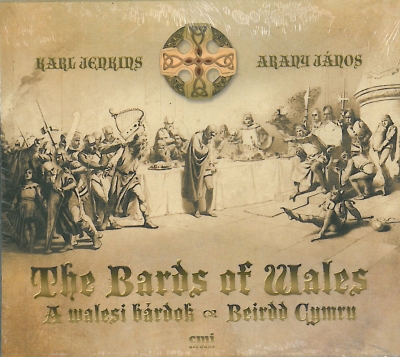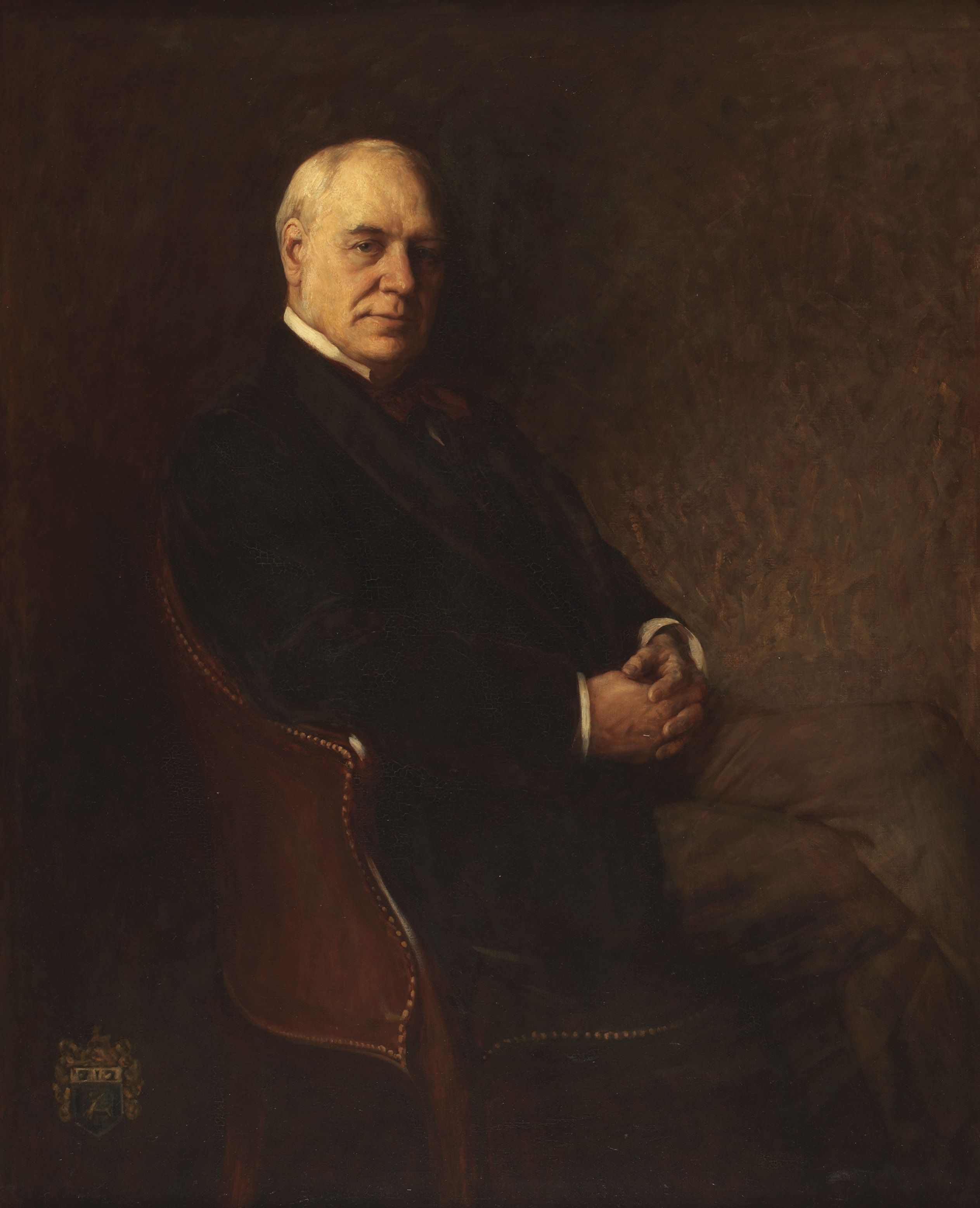|
The Bards Of Wales
''The Bards of Wales'' ( hu, A walesi bárdok) is a ballad by the Hungarians, Hungarian poet János Arany, written in 1857. Alongside the Toldi trilogy, it is one of his best known works, published anonymously to evade censorship. Background Arany and other Hungarian poets were asked to write a poem of praise for the visit of Franz Joseph I of Austria. Arany instead wrote the tale of the 500 Wales, Welsh bards Burning at the stake, sent to the stake by Edward I of England for failing to sing his praises at a banquet in Montgomery Castle. The analogy criticised the tight Habsburg rule over Kingdom of Hungary, Hungary since the Hungarian Revolution of 1848. It was a form of Passive Resistance (Hungary), passive resistance to the repressive policies of Baron Alexander von Bach, Alexander von Bach in Hungary, and to the planned visit of the monarch. [...More Info...] [...Related Items...] OR: [Wikipedia] [Google] [Baidu] |
Old English
Old English (, ), or Anglo-Saxon, is the earliest recorded form of the English language, spoken in England and southern and eastern Scotland in the early Middle Ages. It was brought to Great Britain by Anglo-Saxon settlement of Britain, Anglo-Saxon settlers in the mid-5th century, and the first Old English literature, Old English literary works date from the mid-7th century. After the Norman conquest of 1066, English was replaced, for a time, by Anglo-Norman language, Anglo-Norman (a langues d'oïl, relative of French) as the language of the upper classes. This is regarded as marking the end of the Old English era, since during this period the English language was heavily influenced by Anglo-Norman, developing into a phase known now as Middle English in England and Early Scots in Scotland. Old English developed from a set of Anglo-Frisian languages, Anglo-Frisian or Ingvaeonic dialects originally spoken by Germanic peoples, Germanic tribes traditionally known as the Angles, Sa ... [...More Info...] [...Related Items...] OR: [Wikipedia] [Google] [Baidu] |
Ballads
A ballad is a form of verse, often a narrative set to music. Ballads derive from the medieval French ''chanson balladée'' or ''ballade'', which were originally "dance songs". Ballads were particularly characteristic of the popular poetry and song of Britain and Ireland from the Late Middle Ages until the 19th century. They were widely used across Europe, and later in Australia, North Africa, North America and South America. Ballads are often 13 lines with an ABABBCBC form, consisting of couplets (two lines) of rhymed verse, each of 14 syllables. Another common form is ABAB or ABCB repeated, in alternating eight and six syllable lines. Many ballads were written and sold as single sheet broadsides. The form was often used by poets and composers from the 18th century onwards to produce lyrical ballads. In the later 19th century, the term took on the meaning of a slow form of popular love song and is often used for any love song, particularly the sentimental ballad of pop or roc ... [...More Info...] [...Related Items...] OR: [Wikipedia] [Google] [Baidu] |
1857 Poems
Events January–March * January 1 – The biggest Estonian newspaper, ''Postimees'', is established by Johann Voldemar Jannsen. * January 7 – The partly French-owned London General Omnibus Company begins operating. * January 9 – The 7.9 Fort Tejon earthquake shakes Central and Southern California, with a maximum Mercalli intensity of IX (''Violent''). * January 24 – The University of Calcutta is established in Calcutta, as the first multidisciplinary modern university in South Asia. The University of Bombay is also established in Bombay, British India, this year. * February 3 – The National Deaf Mute College (later renamed Gallaudet University) is established in Washington, D.C., becoming the first school for the advanced education of the deaf. * February 5 – The Federal Constitution of the United Mexican States is promulgated. * March – The Austrian garrison leaves Bucharest. * March 3 ** France and the United Kingdom formall ... [...More Info...] [...Related Items...] OR: [Wikipedia] [Google] [Baidu] |
Kurds'komu Bratovi
"''Kurds'komu bratovi'' ( uk, Курдському братові, ) is an aesopian poem written by Ukrainian Vasyl Symonenko in March 1963 and disseminated clandestinely in samizdat until 1965 when it appeared posthumously in the German journal ''Suchasnist''. "''Kurds'komu bratovi'' has been described as one of Symonenko's greatest works and made Symonenko a national hero and one of the most important figures in Ukrainian literature. The poem appeared during the height of the First Iraqi-Kurdish War in which the Soviet Union was involved. In 1968, an agricultural college lecturer named Mykola Kots was sentenced to seven years in camp and five years in exile after disseminating copies of the poem wherein the word 'Kurd' was replaced with 'Ukrainian'. Summary The poem has six stanzas and begins with a description of chauvinists invading the land of the Kurds. In the first four stanzas, Symonenko addresses a Kurdish friend and encourages him to fight the invader and oppressor wh ... [...More Info...] [...Related Items...] OR: [Wikipedia] [Google] [Baidu] |
Cantata
A cantata (; ; literally "sung", past participle feminine singular of the Italian verb ''cantare'', "to sing") is a vocal composition with an instrumental accompaniment, typically in several movements, often involving a choir. The meaning of the term changed over time, from the simple single-voice madrigal of the early 17th century, to the multi-voice "cantata da camera" and the "cantata da chiesa" of the later part of that century, from the more substantial dramatic forms of the 18th century to the usually sacred-texted 19th-century cantata, which was effectively a type of short oratorio. Cantatas for use in the liturgy of church services are called church cantata or sacred cantata; other cantatas can be indicated as secular cantatas. Several cantatas were, and still are, written for special occasions, such as Christmas cantatas. Christoph Graupner, Georg Philipp Telemann and Johann Sebastian Bach composed cycles of church cantatas for the occasions of the liturgical year. ... [...More Info...] [...Related Items...] OR: [Wikipedia] [Google] [Baidu] |
Karl Jenkins
Sir Karl William Pamp Jenkins (born 17 February 1944) is a Welsh multi-instrumentalist and composer. His best known works include the song " Adiemus" and the ''Adiemus'' album series; '' Palladio''; ''The Armed Man''; and his ''Requiem''. Jenkins was educated in music at Cardiff University and the Royal Academy of Music: of the latter, he is a fellow and an Associate. He joined the jazz-rock band Soft Machine in 1972 and became the group's lead songwriter in 1974. Jenkins continued to work with Soft Machine up to 1984, but has not been involved with any incarnation of the group since. Jenkins has composed music for advertisement campaigns and has won the industry prize twice. Early life and education Karl Jenkins was born and raised in Penclawdd, Gower, Wales. His mother was Swedish, and his father was Welsh. Jenkins received his initial musical instruction from his father, who was the local schoolteacher, chapel organist and choirmaster. He attended Gowerton Grammar S ... [...More Info...] [...Related Items...] OR: [Wikipedia] [Google] [Baidu] |
Dalriada (band)
Dalriada is a folk metal band from Sopron, Hungary that was formed in 1998 as Echo of Dalriada, but shortened their name to Dalriada in late 2006. Their third studio album ''Kikelet'' and all subsequent albums were successful in the top ten of the official Mahasz music charts. Their '' Arany-album'' won the 2009 HangSúly Hungarian Metal Awards out of 70 contestants. In 2012, the band toured through Europe with Arkona and Darkest Era. Album titles The titles of their albums are supposed to be ancient Hungarian names of months (which are not used today). In fact they originate from the folk-history work "" by Hungarian writer Zoltán Paál and are not based on any scientific evidence. Specifically, "Fergeteg" is, according to Paál, the ancient name of January, "Jégbontó" is February, "Kikelet" is March, "Szelek" is April, "Ígéret" is May, "Napisten" is June, "Áldás" is July, "Új Kenyér" is August, "Őszelő" is September, "Magvető" is October, "Enyészet" is November, ... [...More Info...] [...Related Items...] OR: [Wikipedia] [Google] [Baidu] |
Kaláka
Kaláka is a folk music group formed in Budapest, Hungary on November 26, 1969. The founding members are Dániel Gryllus, Vilmos Gryllus, István Mikó and Balázs Radványi. Later Mikó was replaced by Péter Dabasi who in turn was replaced by Péter Huzella and later by Gábor Becze. Tamás Kobzos Kiss was also a member of the band for a short time. They have been in their current lineup since 1996. Since 1980 they have organized the Kaláka Folk Festival every July in the Castle of Diósgyőr, Miskolc. The word ''kaláka'' means "working together" in some Hungarian dialects. Members * Gábor Becze: double bass, guitar *Dániel Gryllus: flute, zither, pan flute, clarinet, tárogató, bagpipe * Vilmos Gryllus: cello, guitar, charango, lute, Jew's harp * Balázs Radványi: mandolin, 12-string guitar, ukulele, cuatro, viola, kalimba Works ;Music and poetry Several poems by Hungarian and foreign poets were set to tune by Kaláka, including János Arany, Endre Ady, Sándo ... [...More Info...] [...Related Items...] OR: [Wikipedia] [Google] [Baidu] |
The Bards Of Wales - Beirdd Cymru, Album Cover
''The'' () is a grammatical article in English, denoting persons or things already mentioned, under discussion, implied or otherwise presumed familiar to listeners, readers, or speakers. It is the definite article in English. ''The'' is the most frequently used word in the English language; studies and analyses of texts have found it to account for seven percent of all printed English-language words. It is derived from gendered articles in Old English which combined in Middle English and now has a single form used with pronouns of any gender. The word can be used with both singular and plural nouns, and with a noun that starts with any letter. This is different from many other languages, which have different forms of the definite article for different genders or numbers. Pronunciation In most dialects, "the" is pronounced as (with the voiced dental fricative followed by a schwa) when followed by a consonant sound, and as (homophone of pronoun ''thee'') when followed by a v ... [...More Info...] [...Related Items...] OR: [Wikipedia] [Google] [Baidu] |
Aberystwyth
Aberystwyth () is a university and seaside town as well as a community in Ceredigion, Wales. Located in the historic county of Cardiganshire, means "the mouth of the Ystwyth". Aberystwyth University has been a major educational location in Wales since the establishment of University College Wales in 1872. The town is situated on Cardigan Bay on the west coast of Wales, near the confluence of the River Ystwyth and Afon Rheidol. Following the reconstruction of the harbour, the Ystwyth skirts the town. The Rheidol passes through the town. The seafront, with a pier, stretches from Constitution Hill at the north end of the Promenade to the harbour at the south. The beach is divided by the castle. The town is divided into five areas: Aberystwyth Town; Llanbadarn Fawr; Waunfawr; Llanbadarn; Trefechan; and the most populous, Penparcau. In 2011 the population of the town was 13,040. This rises to nearly 19,000 for the larger conurbation of Aberystwyth and Llanbadarn Fawr. Th ... [...More Info...] [...Related Items...] OR: [Wikipedia] [Google] [Baidu] |
National Library Of Wales
The National Library of Wales ( cy, Llyfrgell Genedlaethol Cymru), Aberystwyth, is the national legal deposit library of Wales and is one of the Welsh Government sponsored bodies. It is the biggest library in Wales, holding over 6.5 million books and periodicals, and the largest collections of archives, portraits, maps and photographic images in Wales. The Library is also home to the national collection of Welsh manuscripts, the National Screen and Sound Archive of Wales, and the most comprehensive collection of paintings and topographical prints in Wales. As the primary research library and archive in Wales and one of the largest research libraries in the United Kingdom, the National Library is a member of Research Libraries UK (RLUK) and the Consortium of European Research Libraries (CERL). At the very core of the National Library of Wales is the mission to collect and preserve materials related to Wales and Welsh life and those which can be utilised by the people of Wales fo ... [...More Info...] [...Related Items...] OR: [Wikipedia] [Google] [Baidu] |






.png)

